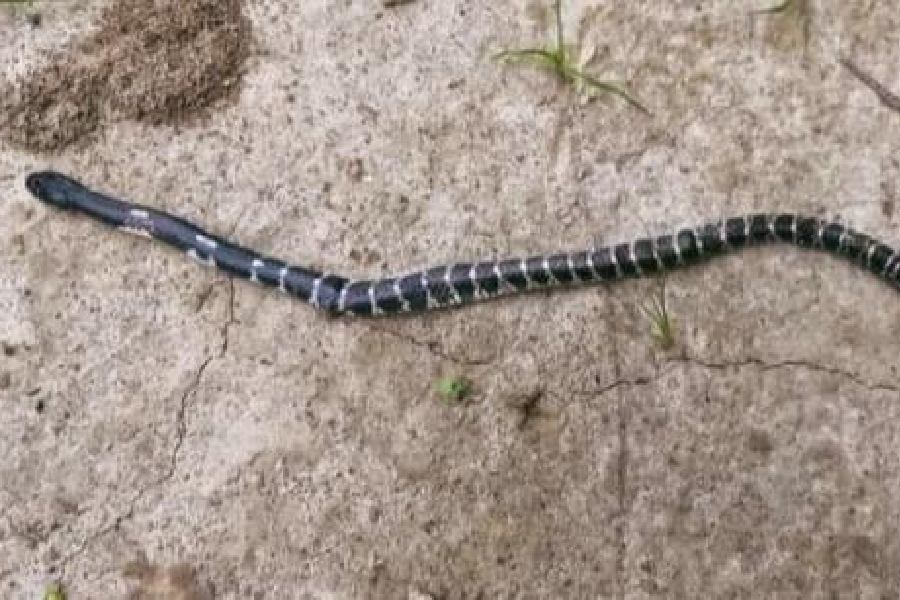Around 500 families in Mosra-Nabapally village of Nadia’s Chakdaha are scared of stepping out of their homes after dusk owing to the growing population of the venomous common krait, locally known as kalas, in the area.
Kalas snakes have bitten over a dozen recently, leading to at least three deaths, including that of a Class VI student.
Kalas is a highly venomous snake and works as a silent killer. The snake with a
dark brown colour has white rings throughout its body. It remains sluggish during the day and becomes active at night.
Mosra-Nabapally villagers said that in the past few months they had killed over 50 kalas but the risks have not been reduced.
Villagers added that they sought the help of the district forest department but it had not been able to come up with a solution.
People in the village are compelled to confine themselves inside their
homes every day once dusk descends.
“This has become an unbearable situation as it seems we have been living with snakes. Once darkness descends, kalas can often be spotted on our village roads. It has become extremely risky for us to access the unlit stretches.
“The fear is such that students like me have stopped going for tuition classes in the evening,” said Rikita Roy, a student of Class XII who lost her younger sister recently to snakebite.
“We try to finish our essential work before sunset so that we don’t need to go
outside later,” said Paresh Biswas, a resident of Mosra-Nabapally.
“But homes are also not safe from the kalas. The snakes are sneaking into our houses, cow sheds and stacks of harvested crop, making our life miserable. At night, the snake becomes active and it often slithers on beds and bites sleeping people,” he added.
Members of the Chakdaha Biggyan o Sanskritik Sanstha (CBSS), a scientific organisation that works on, among other topics, the awareness of various kinds of snakes, visited the village recently and took up the matter with the local administration.
They suggested forest officials release the sakhamuti snake (banded krait) in the area, which is less venomous and kills the kalas.
Bibartan Bhattacharjee of the CBSS said: “Releasing the sakhamuti snake, which is less poisonous but an enemy of kalas, can be a way to eliminate the kalas. We have requested the forest authorities to consider our proposal.”
“There is no report of human deaths through the bite of sakhamuti. People need to know that this snake is a threat to the kalas,” Bhattacharya said.
However, he stressed the need to clean bushes in the area. Students of Dhanicha High School recently cleaned some bushes, said headmaster Partha Pratim Chakraborty.
An officer of Ranaghat forest range said they would visit the village soon.











